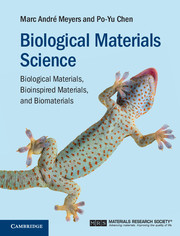Book contents
- Frontmatter
- Epigraph
- Contents
- Preface
- List of Boxes
- 1 Evolution of materials science and engineering: from natural to bioinspired materials
- Part I Basic biology principles
- 2 Self-assembly, hierarchy, and evolution
- 3 Basic building blocks: biopolymers
- 4 Cells
- 5 Biomineralization
- Part II Biological materials
- Part III Bioinspired materials and biomimetics
- References
- Index
2 - Self-assembly, hierarchy, and evolution
from Part I - Basic biology principles
Published online by Cambridge University Press: 05 August 2014
- Frontmatter
- Epigraph
- Contents
- Preface
- List of Boxes
- 1 Evolution of materials science and engineering: from natural to bioinspired materials
- Part I Basic biology principles
- 2 Self-assembly, hierarchy, and evolution
- 3 Basic building blocks: biopolymers
- 4 Cells
- 5 Biomineralization
- Part II Biological materials
- Part III Bioinspired materials and biomimetics
- References
- Index
Summary
Introduction
A considerable number of books and review articles have been written on biological materials, and they constitute the foundation necessary to embrace this field. Some of the best known are given in Table 2.1. Table 2.2 lists some of the key review articles in the field. An important step was taken by D’ Arcy Thompson with his monumental book, On Growth and Form, initially published in 1917 (Thompson, 1917). This book still constitutes exciting reading material and is a valiant attempt at representing biological shapes mathematically.
Hierarchical structures
It could be argued that all materials are hierarchically structured, since the changes in dimensional scale bring about different mechanisms of deformation and damage. However, in biological materials this hierarchical organization is inherent to the design. The design of the structure and of the materials are intimately connected in biological systems, whereas in synthetic materials there is often a disciplinary separation, based largely on tradition, between materials (materials engineers) and structures (mechanical engineers). We illustrate this by presenting four examples in Fig. 2.1 (avian feather rachis), Fig. 2.2 (abalone shell), Fig. 2.3 (crab exoskeleton), and Fig. 2.4 (bone).
- Type
- Chapter
- Information
- Biological Materials ScienceBiological Materials, Bioinspired Materials, and Biomaterials, pp. 19 - 52Publisher: Cambridge University PressPrint publication year: 2014



